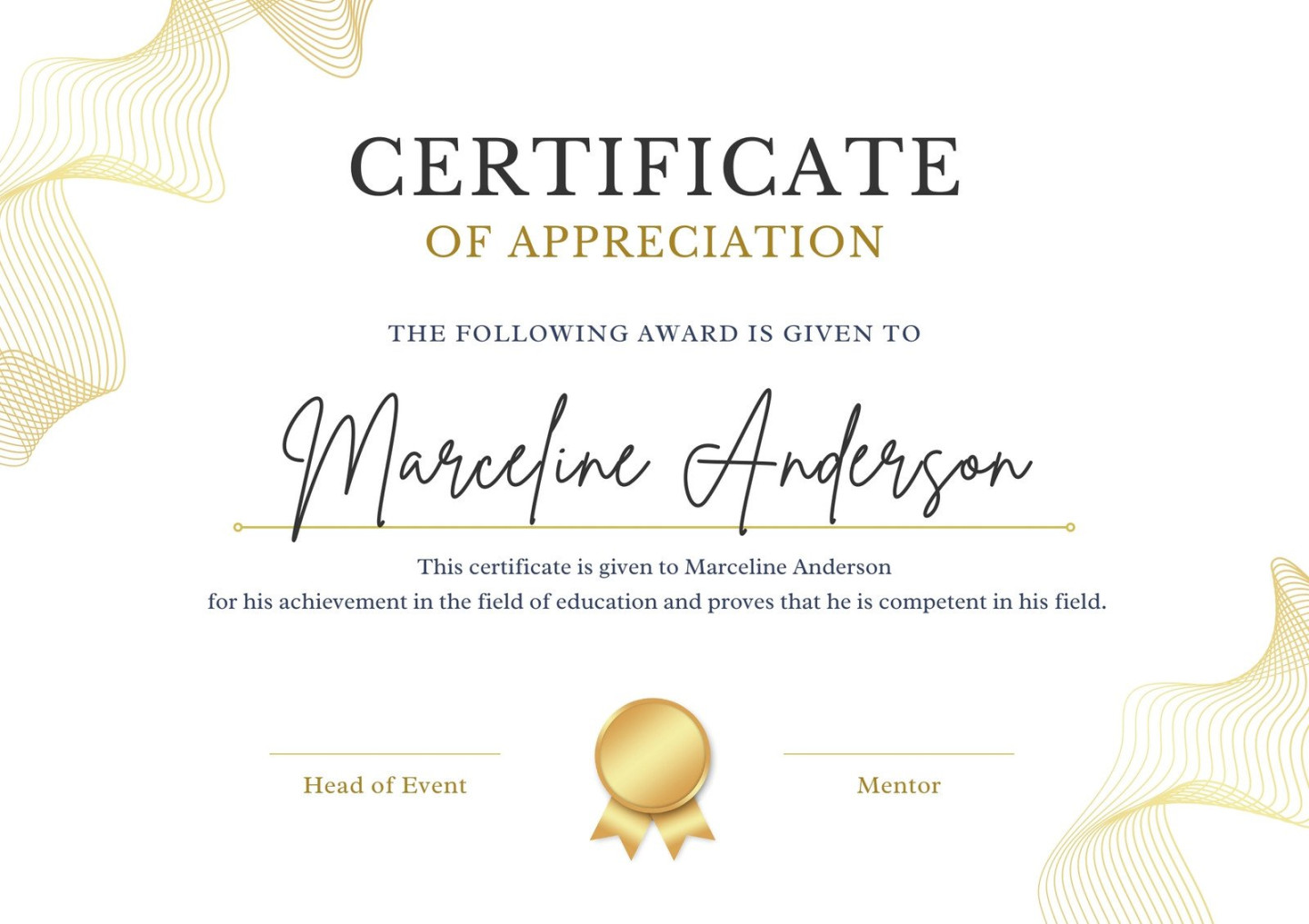Understanding the Purpose
A formal Certificate of appreciation is a document used to recognize and acknowledge the contributions of individuals or organizations. It serves as a tangible symbol of gratitude and can be a valuable addition to a recipient’s professional portfolio. When designing a formal certificate, it is essential to prioritize elements that convey professionalism, trust, and the significance of the recognition.

Key Design Elements
Font Selection
The choice of font significantly impacts the overall appearance and tone of the certificate. Opt for fonts that are classic, elegant, and easy to read. Serif fonts, such as Times New Roman or Garamond, are often preferred for formal documents. Avoid overly decorative or difficult-to-read fonts that may detract from the professionalism of the certificate.
Color Scheme
A carefully chosen color scheme can enhance the visual appeal of the certificate and reinforce the message of appreciation. Consider using a combination of colors that are complementary and evoke feelings of respect and admiration. Avoid bright or jarring colors that may appear unprofessional.
Layout and Composition
The layout of the certificate should be well-organized and balanced. Ensure that the text and graphics are arranged in a way that is easy to follow and visually pleasing. Use white space effectively to create a sense of clarity and sophistication.
Text Content
The text content of the certificate should be concise, clear, and impactful. Use formal language and avoid jargon or overly complex phrases. The certificate should clearly state the reason for the award and the recipient’s name. Consider including a personalized message or quote to make the certificate more meaningful.
Branding Elements
If applicable, incorporate branding elements from your organization, such as your logo, colors, and fonts. This helps to create a consistent and professional look and feel for the certificate.
Border and Frame
A well-designed border or frame can add a touch of elegance and formality to the certificate. Consider using a simple, classic border or a more ornate frame, depending on the desired level of sophistication.
Seal or Stamp
A seal or stamp can add a sense of authenticity and authority to the certificate. This is particularly important for formal awards or recognitions. Choose a seal or stamp that is appropriate for the occasion and complements the overall design of the certificate.
Paper Quality
The quality of the paper used for the certificate can significantly impact its perceived value. Opt for a high-quality paper with a smooth finish. Consider using a textured paper or a paper with a watermark to add a touch of luxury.
Examples of Professional Certificate Designs
To illustrate the key design elements discussed above, here are a few examples of professional certificate designs:
Minimalist Design: A clean and uncluttered design with a simple border and a limited color palette.
Conclusion
Designing a professional formal certificate of appreciation requires careful consideration of various design elements. By focusing on font selection, color scheme, layout, text content, branding, borders, seals, and paper quality, you can create a certificate that is both visually appealing and meaningful. A well-designed certificate serves as a lasting tribute to the recipient’s accomplishments and reflects positively on your organization.